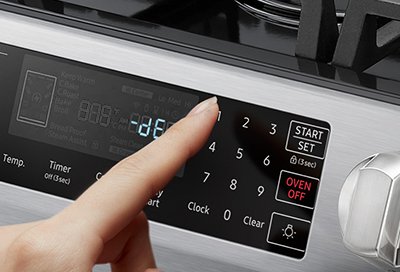
When your Samsung oven or range displays an error code, it’s essentially trying to communicate that something isn’t working quite right. Think of it as your oven waving a tiny red flag. In the case of the “F1” error code, this usually indicates a problem with the oven’s sensor or a malfunction that could affect temperature regulation. But here’s the good news: understanding what this means and taking the right steps can keep your kitchen activities both safe and frustration-free.
Understanding the Error Code F1
The “F1” error code on a Samsung oven or range typically indicates an issue with the oven’s temperature sensor. This sensor is like the thermometer in your oven, making sure it’s heating up to the right temperature for your baking or roasting. If the sensor isn’t working properly, the oven might not heat correctly, leading to undercooked or overcooked meals. It’s a bit like trying to drive with a broken speedometer; you might still get where you’re going, but it’s hard to tell if you’re doing it safely.
You might also see the “F1” code if there’s a problem with the oven’s electronic control board. This is the brain of your appliance, coordinating all the different functions. If it’s acting up, it’s like having a conductor who’s lost their sheet music—not a disaster, but not exactly harmonious either.
While the “F1” error might sound alarming, it doesn’t mean your oven will burst into flames. It’s more of a heads-up that you need to give your oven some attention. If left unaddressed, though, this issue could potentially lead to inefficient cooking, food safety concerns, or further damage to the appliance.
Is It Safe to Continue Using Your Oven?
You may be tempted to ignore the error and keep using the oven, especially if it seems to be working fine otherwise. However, proceeding with caution is always the best approach. Using the oven with the “F1” error could lead to unpredictable cooking results. Imagine baking cookies that either come out half-baked or burnt to a crisp because the oven temperature fluctuates uncontrollably.
Ignoring the error code might not immediately harm you or the appliance, but over time, it can cause the problem to worsen. Think of it like driving with a low tire pressure warning; you might get by for a few days, but eventually, you’re going to need a fix—preferably before it results in a flat tire.
For peace of mind and to avoid further complications, it’s wise to consult the oven’s user manual. Usually, the error code section can give you specific advice or troubleshooting steps. Alternatively, reaching out to a professional or Samsung customer support might be the easiest way to diagnose and resolve the issue accurately.
Troubleshooting and Next Steps
If you’re feeling tech-savvy, you can try a few basic troubleshooting steps. First, reset your oven by turning off the power at the circuit breaker for about a minute, then turning it back on. It’s akin to rebooting your computer when it’s acting glitchy—sometimes a fresh start is all it needs.
If the error code persists, check the oven’s sensor and wiring connections. Make sure nothing looks loose or damaged. This step is more like a doctor checking your reflexes; it doesn’t fix everything, but it can pinpoint where the issue might lie. If you’re not comfortable checking the wiring, it’s okay to call in a professional. After all, safety comes first.
In some cases, replacing the temperature sensor or control board might be necessary. While this might sound daunting, finding the right replacement parts and getting a technician to install them can save you from buying a whole new oven. Remember, sometimes investing a little now can prevent bigger expenses later.
Prevention Tips to Avoid Future Error Codes
Once you’ve tackled the error code, you’ll likely want to avoid seeing it again. Regular maintenance of your oven is key, much like how regular exercise keeps our bodies in good shape. Cleaning your oven regularly, avoiding spills, and using proper cooking techniques can help prevent many issues.
Keep an eye on how the oven behaves. If it takes longer than usual to preheat or if dishes aren’t cooking evenly, these could be early signs of a potential problem. Catching these signs early is like noticing a small leak before it turns into a flood.
Having a periodic professional check-up can also be beneficial. It’s a bit like going to the dentist for a cleaning—everything might seem fine on the surface, but professional insights can prevent more significant issues down the road. With a little attention and care, your Samsung oven or range will remain a reliable helper in your culinary adventures.
By understanding the “F1” error code and taking the appropriate steps to fix it, you can ensure your kitchen remains a safe and efficient place for all your cooking needs. Remember, knowledge is power, and now you’re equipped to tackle this issue head-on!